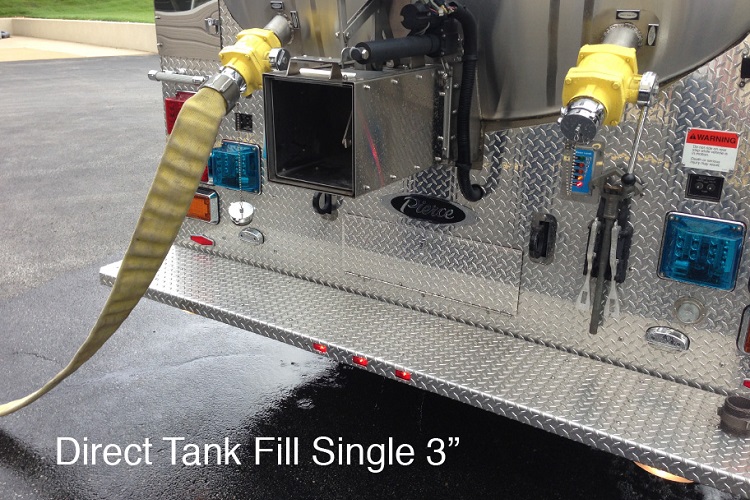
Throw Back to Basics | By Brian Zaitz
For many, the idea of having to haul water the fireground seems crazy. However, for many in the fire service, this is an everyday reality. For areas with limited fire hydrants or no hydrant service, tanker shuttle operations are as routine a part of the fireground as pulling a preconnect or a jiffy.
Depending on what part of the country you are from, tankers or tenders are water-hauling apparatus designed specifically to carry large quantities of water to the fireground. Today, many of these apparatus are cross-built to serve as both a pumper and a tanker so we can get the most “bang for our buck” in today’s fire service.

Tanker shuttle operations can determine the success or failure of a response in a limited water supply situation. This operation is simple in design: The tanker/tender arrives on scene, either pumps its water off or dumps its water into a drop tank on scene, and then it drives to a specific fill site to fill the apparatus and “shuttle” water back to the scene. Simple in nature, but there are many nuances to this operation that can either hinder or help the overall fireground.
RELATED FIREFIGHTER TRAINING
- WATER TANKER SHUTTLES: 10 RULES FOR SUCCESS
- Resource Management for High-Capacity Water Shuttles
- Tanker Shuttle Techniques For Supplying Large Flows
One such nuance is the way the tanker/tender is filled. The line from the hydrant is hooked into the pump intake and the engineer/driver maintains a full booster tank for the duration of the event. If this same idea was applied to filling a tanker/tender, you could waste several minutes at the fill site and directly affect fireground operations.

Two main methods exist to fill tankers/tenders: through-the-pump and direct tank fill. Through-the-pump requires the incoming water to flow through the pump plumbing working to the tank. The other option is a direct tank fill valve, whereas the apparatus plumbing directly flows unimpeded into the tank. The key is to understand your specific apparatus and determine which method works best for your truck and your organization.
RELATED
Tanker shuttle operations are a fundamental fireground function for many fire departments, so it is important to fully understand the role each apparatus play in the operation and how your apparatus best operates to maximize efficiency on the fireground. Take some time and drop some water and practice timing the various methods of tanker/tender filling to truly determine your organization’s best practice.
Download this training bulletin as a PDF HERE (4.3 MB).
Brian Zaitz  is a 15-year student of the fire service and the Captain-Training Officer with the Metro West Fire Protection District. Zaitz is also an instructor with Engine House Training, LLC , an instructor at the St. Louis County Fire Academy, and the Board of Director with the International Society of Fire Service Instructors. He has several degrees including an associates in paramedic technology, a bachelor’s in fire science management, and master’s in human resource development. Zaitz is also a credentialed chief training officer through the Center for Public Safety Excellence as well as a student of the National Fire Academy’s Executive Fire Officer Program.
is a 15-year student of the fire service and the Captain-Training Officer with the Metro West Fire Protection District. Zaitz is also an instructor with Engine House Training, LLC , an instructor at the St. Louis County Fire Academy, and the Board of Director with the International Society of Fire Service Instructors. He has several degrees including an associates in paramedic technology, a bachelor’s in fire science management, and master’s in human resource development. Zaitz is also a credentialed chief training officer through the Center for Public Safety Excellence as well as a student of the National Fire Academy’s Executive Fire Officer Program.
MORE THROW BACK TO BASICS

